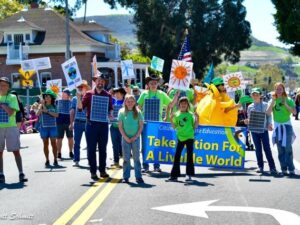
Legislators approved California’s cap-and-trade extension bill yesterday in Sacramento.
What you should know about California’s cap-and-trade extension
By Flannery Winchester
On Monday, the California legislature passed a bill to extend its cap-and-trade program until 2030. The program “requires companies to buy permits to release greenhouse gases into the atmosphere,” reported the LA Times, and “provid[es] a key tool for meeting the state’s ambitious goal for slashing emissions.”
But the legislation, known as bill AB398, was complex, and the public discussion was robust over its merits and drawbacks. Let’s take a look at a few of them.
Price signals and bipartisan support
The National Resources Defense Council, along with 10 other environmental and public health groups, put out this list of what they see as the bill’s positive attributes. One positive they list is that AB398 “reduces offsets to strengthen price signal.” When the price signal is strong enough, carbon pricing puts pressure on the market to shift to low- or no-emissions energy options.
It was also a bipartisan achievement. In total, eight Republicans joined Democrats to vote for this bill: Seven in the Assembly and one in the Senate. State Senator Tom Berryhill (R-Modesto) said in a statement, “This bill is not perfect, but it is more reasonable after a bipartisan negotiation. I am very pleased to have given farmers, small-business owners and rural Californians a voice.” Assembly Republican Leader Chad Mayes also acknowledged the bipartisan support, saying, “Today, we proved that Sacramento can rise above the partisan fray of our country to do right for all Californians.”
These sentiments echo the perspective of some Republicans on the national stage who are increasingly vocal about the need to work together on climate solutions.
Concerns over clarity, effectiveness and equity
For some carbon pricing advocates, such as the group CalFACT, this bill falls short of what California could be doing. State Senator Bob Wieckowski previously introduced a different bill, SB775, which would have set the carbon price higher, returned the revenue directly to households through dividends, and more. Compared to AB398, CalFACT felt SB775 was simpler, more transparent, and easier to implement.
CalFACT also had concerns about the bill’s overall effectiveness at reducing emissions. “In the current program, actual emissions are below the cap,” CalFACT’s website states. That means the bill’s surplus allowances could “allow polluters to meet cap and trade requirements on paper only with no real emissions reductions in practice, and we would not meet our 2030 goals.” The bill also allows for carbon offsets, which CalFACT says could actually allow polluters to emit more than they’re expected to reduce under this program.
Another significant concern is not just that pollution is being reduced overall, but where that pollution is reduced. Environmental justice organizations, including California Environmental Justice Alliance and others, fear that provisions of AB398 are too weak to fully combat local emissions and air quality issues. “Residents living near the Chevron Refinery in Richmond are upset that their ability to make decisions about our air quality is now being preempted by the state,” explained Amy Vanderwarker, CEJA’s co-director. “Overall this is a missed opportunity by California to lead the world in an equitable approach to address the immediate health impacts of local pollutants and advance an equitable approach to actually reduce the risk of climate catastrophe.”
350.org also took issue with the bill, launching a petition saying AB398 gives “major handouts to Big Oil, including rules that would strip local air districts and the State Air Resources Board of their ability to regulate pollution from refineries, putting frontline communities at risk.”
Bottom line
It’s clear from the variety of perspectives here that this issue is complex. Many wanted to see even bolder climate action taken yesterday, especially with a focus on vulnerable communities. Still, many were encouraged to see this budding bipartisan commitment to the climate.
After yesterday’s vote, State Sen. Wieckowski said in a statement, “Although I would prefer a much more robust Cap and Trade program as spelled out in SB775, the Governor’s proposal attempts to move us forward to 2030.” He added, “Climate dividends were a cornerstone of my bill. It is my hope and commitment that California’s Cap and Trade program continues to evolve towards a dividend to our residents most in need.”
At CCL, we’re optimistic that California—and the country as a whole—will continue to work toward efficient, effective and equitable carbon pricing in the years to come.





